How to Measure Biological Pest Control Success
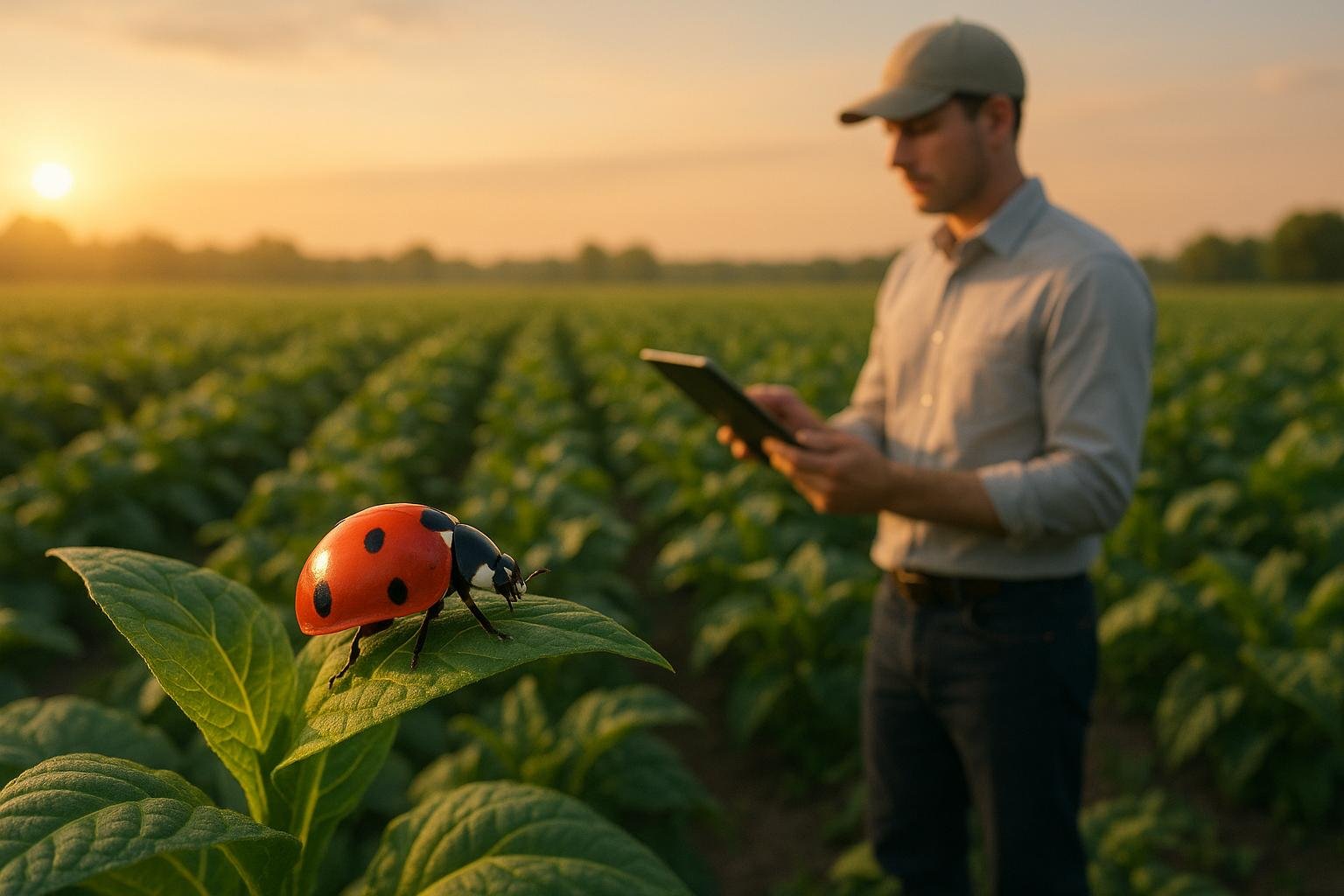
Biological pest control uses natural methods to manage pests, offering a safer and longer-lasting alternative to chemicals. Here's a quick guide to understanding and measuring its success:
-
Key Strategies:
- Importation: Introducing natural enemies to control pests.
- Augmentation: Increasing the population of beneficial organisms.
- Conservation: Protecting and supporting existing predators.
-
Success Metrics:
- Pest Population: Aim for an 85–95% reduction.
- Treatment Efficacy: Over 90% effectiveness in controlling pests.
- Environmental Impact: Reduce pesticide use by at least 25%.
-
Monitoring Tools:
- Regular inspections, trap monitoring, and predator assessments.
- Use of AI and smart systems for real-time tracking.
-
Examples of Success:
Oregon State University introduced a wasp species in the 1980s, saving $400,000 annually by controlling aphid populations.
| Aspect | Biological Control | Chemical Control |
|---|---|---|
| Method | Natural processes and organisms | Synthetic pesticides |
| Timeline | Gradual, long-lasting results | Rapid but temporary |
| Environmental Impact | Minimal, supports ecosystem balance | Potential harm to non-target species |
| Sustainability | Self-sustaining once established | Requires repeated applications |
How Does Biological Pest Control Work? - The Plant Enthusiast

Setting Up Success Measurements
To effectively evaluate biological pest control, it's crucial to establish clear metrics. Research shows that pest control professionals using structured measurement systems achieve success rates as high as 92% in their efforts.
Key Success Metrics
Measuring the success of biological pest control begins with identifying specific indicators that align with both short-term and long-term objectives. These metrics provide a clear picture of progress:
| Metric Category | Key Measurements | Target Range |
|---|---|---|
| Pest Population | Density counts/trap catches | 85–95% reduction |
| Treatment Efficacy | Initial success rate, long-term control | Over 90% effectiveness |
| Environmental Impact | Pesticide use reduction | ≥25% decrease |
Many professionals rely on electronic tools for precision tracking, with 89% of specialists incorporating technology into their monitoring processes. Before tracking these metrics, it's essential to establish a baseline.
Starting Point Data Collection
Baseline data collection is critical for measuring progress accurately. A 2016 study from Burkina Faso highlights effective methods, including:
- Conducting regular site inspections (four times monthly)
- Measuring pest population density
- Mapping species identification and distribution
In agriculture, the stakes are high - major crops like rice, maize, wheat, and soybeans can suffer losses ranging from 21.4% to 30% without proper pest control measures.
To set up initial measurements, focus on the following:
-
Population Assessment and Damage
Use appropriate tools to inspect and document pest numbers and damage, particularly for structural pests. This data enables clear comparisons before and after treatment. -
Environmental Conditions
Record factors such as temperature, moisture levels, and natural predator populations. These elements influence pest behavior and help assess the long-term effectiveness of control strategies.
How to Track and Measure Results
Keeping tabs on pest activity is essential for effective integrated pest management. By regularly monitoring and collecting data - through scouting and sampling both pests and beneficial insect populations - you can ensure that your control measures are timely and well-balanced.
Pest and Predator Monitoring Methods
At the heart of effective pest management is regular scouting. How often you inspect depends on your specific needs, but here’s a general guide:
| Monitoring Type | Frequency | Key Focus Areas |
|---|---|---|
| Visual Inspection | Daily to Weekly | Population density, damage patterns |
| Trap Monitoring | 2–3 times/week | Species identification, count trends |
| Predator Assessment | Weekly | Population growth, distribution |
| Environmental Checks | Daily | Temperature, moisture, conditions |
For best results, conduct inspections during peak activity times, like early mornings or late afternoons, when pests are most active.
While these traditional techniques are reliable, modern technology offers even more precise ways to track and manage pest activity.
Using Technology for Tracking
Technology builds on manual methods, adding accuracy and efficiency to pest monitoring. Smart systems equipped with AI can provide round-the-clock surveillance, automatically identify species, analyze trends in real time, and even send mobile alerts.
"Pest control in food and pharma is about more than managing nuisances - it's about safeguarding supply chains and protecting public health."
– Alex Hawkinson, Founder and CEO of BrightAI
"Customers are seeing the immediate value in reducing operational risks and preventing costly downtime. This technology doesn't just solve problems - it stops them before they start, and we're eager to see how it continues to elevate safety and efficiency in these critical industries."
– Claire Larcombe, Global Portfolio Director at Pelsis
Here are some examples of how advanced monitoring systems are making a difference:
- Sensor networks that combine camera surveillance with environmental monitoring for a comprehensive view.
- AI-powered tools that gather insect and environmental data to fine-tune pest control strategies.
- Smart sprayer systems capable of cutting herbicide use by up to 90% by targeting pests with pinpoint accuracy.
🚀 Ready to Reinvent Your Garden?
Join thousands of homeowners who have transformed their gardens using our AI design tool. Upload one photo to explore endless possibilities.
Get your AI garden designs →Measuring Natural Predator Success
Quick vs Long-Term Results
When evaluating natural predators in pest control, it's crucial to look at both their immediate impact and their ability to provide consistent results over time. Studies show that natural predators can cut pest populations by an average of 73% while boosting crop yields by 25%. However, the effectiveness varies depending on the type of crop. For example:
| Crop Type | Average Pest Reduction |
|---|---|
| Cereal Crops | 51% |
| Fruit Trees | 103% |
| Vegetable Crops | 62% |
Sustained success depends on whether these predators can maintain control across multiple growing seasons.
"In order to improve success rates in biological control, an understanding of events in past successful introduction programs is essential." – Luck et al.
To ensure these results are reliable, it's important to closely monitor predator populations and their performance over time.
Tracking Predator Population Growth
Tracking the growth and activity of predator populations goes beyond measuring their initial impact. Regular monitoring provides critical insights into how well they continue to control pests. Experts recommend monitoring beneficial insects weekly or biweekly during the growing season. Here are three effective methods:
- Visual Inspection: Use tools like beating trays to count predators and pests during routine checks.
- Trap Monitoring: Set up insect traps or pheromone lures to track the presence of beneficial insects.
- Population Ratio Analysis: Compare predator and pest counts over time to assess control effectiveness.
A notable example comes from Kenya, where the introduction of Diadegma semiclausum to combat the diamondback moth (Plutella xylostella) achieved nearly 100% parasitism rates, highlighting its exceptional efficiency.
Adjust management strategies based on what the monitoring reveals. This might include modifying predator numbers or improving habitat conditions to ensure pest levels stay within acceptable economic thresholds.
sbb-itb-4d6a8dd
Combining Control Methods
IPM Program Integration
Incorporating biological control into an Integrated Pest Management (IPM) system can make pest control more efficient and environmentally friendly. This approach blends techniques like crop rotation, soil management, and the use of selective natural pesticides applied at economic thresholds. Enhancing habitats for beneficial insects is another key component of this strategy, promoting long-term balance and reducing pest populations. Timing is critical - applying selective pesticides during specific windows minimizes harm to helpful insects.
As field data becomes available, it's essential to adapt and fine-tune these methods to align with real-world conditions.
Adjusting Control Methods
Performance data plays a crucial role in refining pest control strategies. By analyzing the timing and impact of various interventions, you can identify what works best. For instance, planting a diverse range of crops can significantly improve the effectiveness of biological control.
To get the most out of your pest management efforts:
- Keep a close watch on pest populations and compare them to established economic thresholds.
- Document the timing of interventions to determine the most effective periods for action.
- Track the numbers of beneficial insects before and after treatments to assess their impact.
Studies have highlighted that landscapes with greater plant diversity can cut pest pressure by as much as 73%, all while supporting thriving populations of natural pest enemies. These adjustments, guided by earlier performance data, ensure your pest management plan evolves and improves over time.
Regular monitoring and strategic tweaking of your methods are key to maintaining effective and sustainable pest control.
Record Keeping and Reports
Effective pest management relies heavily on thorough record-keeping and timely reporting. These practices form the backbone of maintaining and improving biological pest control strategies.
Key Success Measurements
Keeping accurate digital records is essential for evaluating pest control performance. Industry standards emphasize tracking these critical metrics:
| Record Type | Measurement Focus | Documentation Requirements |
|---|---|---|
| Data Completeness | Inspection frequency | Weekly documentation rate |
| Record Timeliness | Update intervals | Same-day logging |
| Compliance Status | Regulatory adherence | Quarterly audit reports |
"Record keeping is vital. It's an absolute... That record is a story, and if we haven't told that story, we have failed." - Dominique Sauvage, senior director of quality, training and field operations at Copesan Services
Key details to record include:
- Identification of pest species and their population density
- Weather conditions during treatment applications
- Dates and methods of treatments
- Cost analysis of control methods
- Assessments of crop damage
These details provide the foundation for making informed adjustments to pest control strategies.
Ensuring Compliance and Quality
Accurate documentation not only tracks success but also ensures adherence to regulatory standards. Digital logbooks make this process more efficient, improving both data accuracy and management.
For professional-level record-keeping, include the following:
- Maps showing the locations of monitoring devices
- Detailed logs of service visits
- Descriptions of trap catches
- EPA registration numbers for applied substances
- Follow-up inspection reports
Advanced tools, like the 'Backcountry Camera' featuring AI and thermal imaging, are revolutionizing monitoring efforts. For example, this system has successfully maintained predator-free zones across approximately 50,000 acres in South Westland as of May 2025.
Regularly analyzing these records helps identify patterns, refine strategies, and showcase the effectiveness of pest management programs.
Conclusion: Steps for Better Pest Control
Achieving effective biological pest control relies on a structured approach that emphasizes consistent measurement and refinement. With the market for environmentally friendly pest management projected to hit $8.83 billion by 2030, it’s clear that interest in sustainable solutions is growing.
Here are some practical strategies you can implement:
| Strategy | Implementation | Measurement Method |
|---|---|---|
| Population Monitoring | Weekly field surveys and trap checks | Digital tracking of pest density |
| Environmental Analysis | Logging weather and soil conditions | Automated sensor data collection |
| Treatment Assessment | Documenting intervention outcomes | Cost-benefit analysis reports |
These methods not only build upon traditional measurement techniques but also pave the way for incorporating advanced tools into your pest management plan.
One example of this advancement is the use of digital tools like AIGardenPlanner, which designs landscapes to encourage habitats for beneficial insects. By aligning these AI-driven designs with performance analytics, you can create an ecosystem where natural pest control thrives. For instance, vineyards in the Pahrump Valley have successfully used predictive analytics to manage grape pests preemptively, reducing their reliance on chemical treatments.
"AI is poised to transform pest control on all fronts. It automates tasks, so owners and field technicians have more time to focus on strategic growth. It improves customer experience through better communication and more effective service. Those results lead to increased revenue through more new appointments and repeat business."
– Dylan Henryson, Market General Manager, Pest, FieldRoutes
Modern technology is reshaping pest management through advanced data collection and precise analysis. These innovations allow for better timing of control measures, demonstrating how traditional observation methods can evolve when combined with cutting-edge monitoring systems.
🎨 Visualize Your Dream Garden Today!
Transform any outdoor space into a professional landscape design in minutes. Just upload a photo, choose your style, and let our AI do the rest.
Start your garden transformation now →FAQs
What’s the best way to measure the success of biological pest control?
To gauge how effective biological pest control methods are, the first step is to establish a baseline. This means observing and recording pest populations and their activity before introducing any control agents. You can gather this data through methods like direct counting, setting traps, or conducting visual inspections.
Next, define clear objectives for your pest control efforts. For example, you might aim to reduce pest numbers by a specific percentage or lower the amount of crop damage. Regularly monitor pest populations, environmental conditions, and plant health over time, comparing the results to your initial baseline. To get a clearer picture of the impact, you can set up control plots where no biological agents are used, allowing you to see how conditions differ under the same circumstances.
Finally, assess the outcomes across several growing seasons. Pest populations and environmental factors can fluctuate from year to year, so this long-term perspective will give you a more dependable understanding of how well your approach is working.
How does technology improve pest monitoring in biological pest control systems?
Technology is transforming pest monitoring, making it more precise, efficient, and eco-friendly. Tools such as IoT-enabled smart traps and sensors deliver real-time insights into pest and predator activity. This allows for accurate tracking and timely actions, significantly cutting down the reliance on chemical treatments and minimizing environmental impact.
On top of that, AI-powered analytics can anticipate pest behavior and fine-tune control strategies. This means pest management becomes not only more effective but also more sustainable, contributing to a healthier ecological balance within biological pest control systems.
What are the environmental and sustainability differences between biological and chemical pest control?
Biological and chemical pest control take very different approaches when it comes to managing pests, especially in how they affect the environment. Biological pest control involves using natural predators, parasites, or microorganisms to keep pest populations in check. This method is considered environmentally friendly because it avoids the collateral damage often caused by chemicals. It helps protect beneficial insects, maintains soil quality, and keeps water systems clean, all while steering clear of chemical residues.
On the other hand, chemical pest control depends on synthetic pesticides. While these can be highly effective at eliminating pests, they come with significant downsides. They often contaminate soil and water, harm species that aren't the intended target, and can lead to pests developing resistance over time. These issues not only upset ecological balance but also make this approach less sustainable in the long run.
Related posts
Related Articles
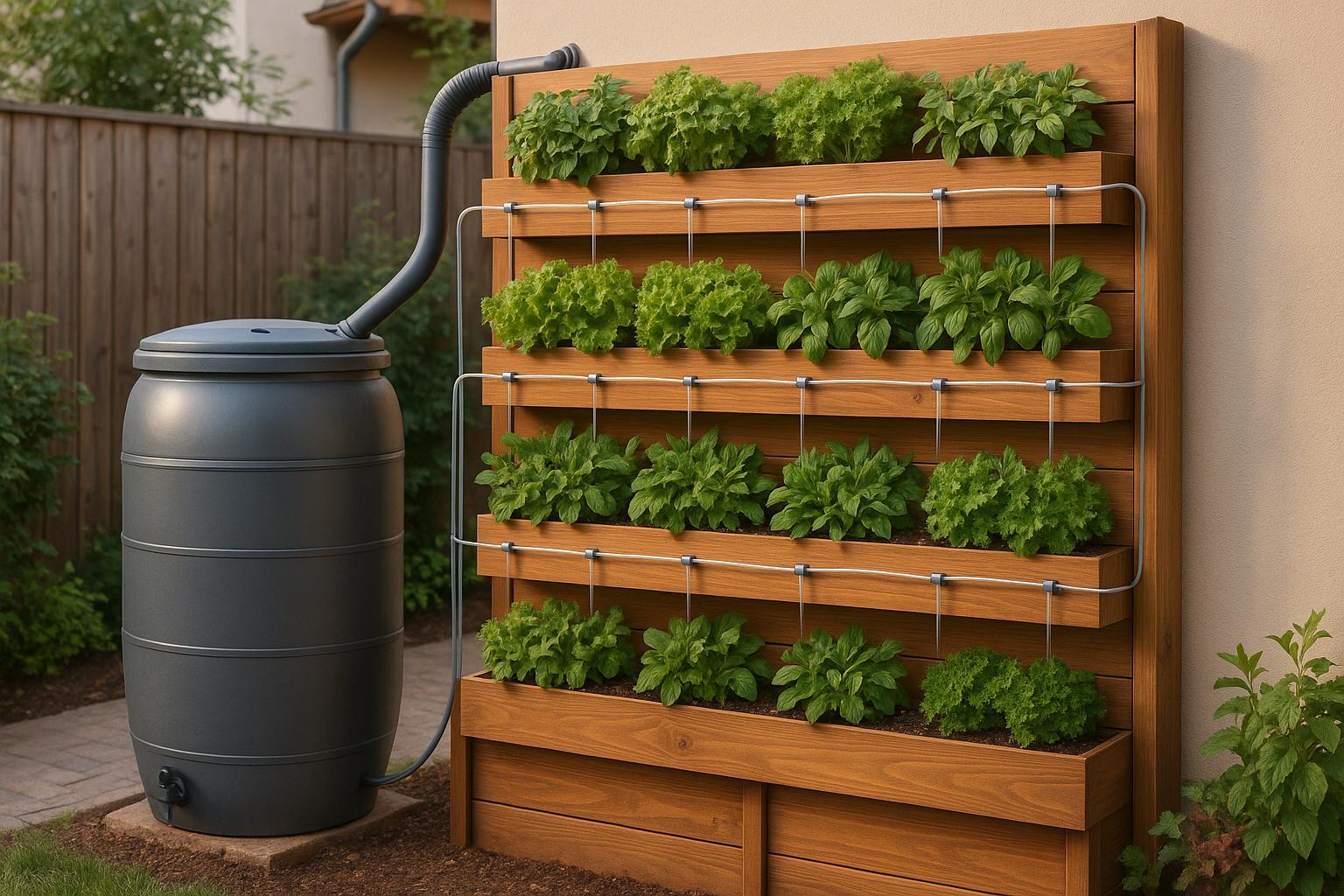
DIY Rainwater Systems for Vertical Gardens
Learn to create a DIY rainwater system for your vertical garden to save water and promote healthier plant growth with low-cost solutions.
The Role of Garden Designers in Creating Stunning Outdoor Spaces
Explore the importance of garden designers in transforming outdoor areas into beautiful and functional spaces. Learn how garden designers bring expertise, creativity, and value to enhance the aesthetics of a property.
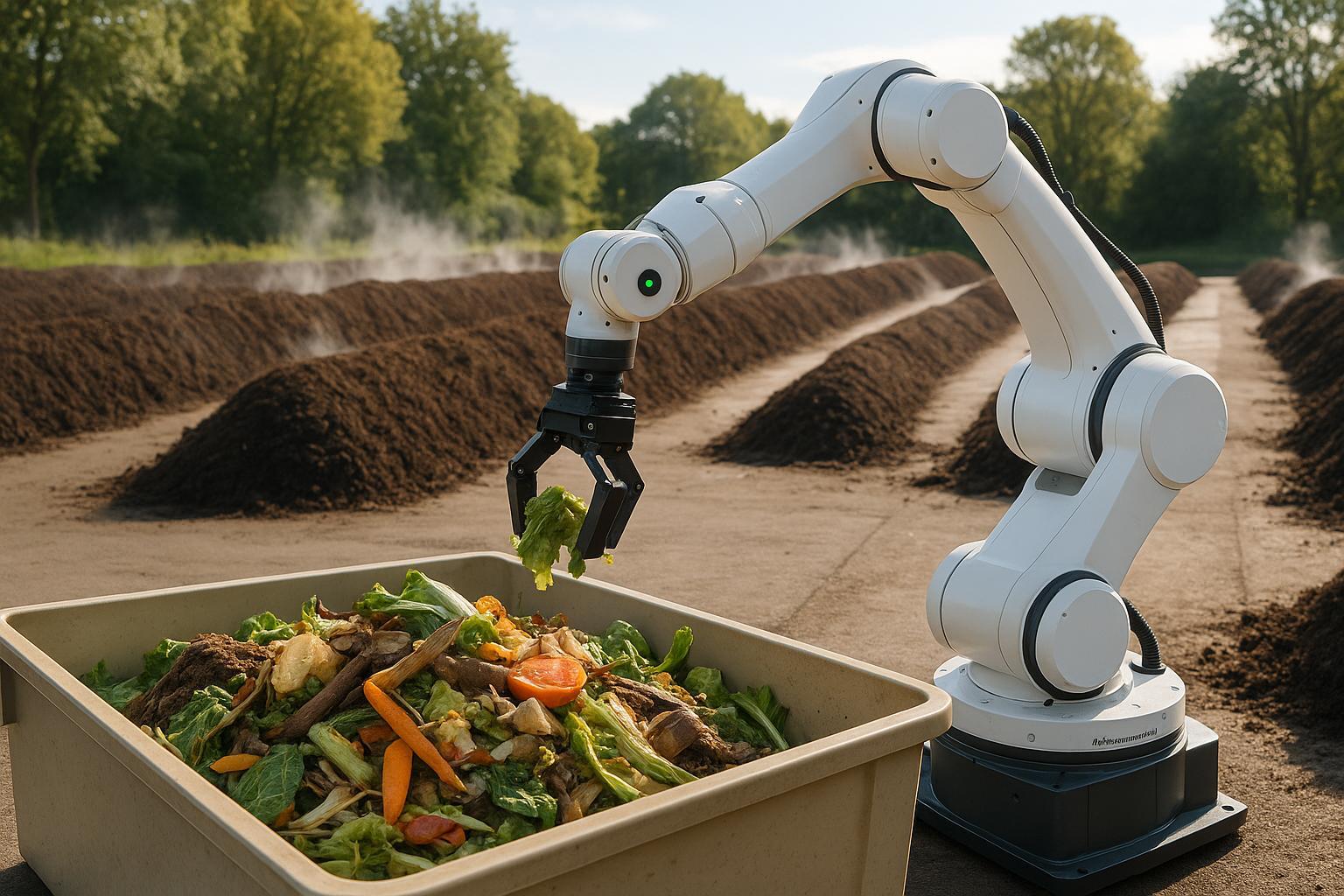
AI in Composting: Emission Control Insights
Explore how AI is revolutionizing composting by reducing emissions, enhancing sorting accuracy, and improving overall efficiency.

How Low Voltage Lighting Saves Energy and Costs
Explore how low voltage lighting can significantly reduce energy costs, enhance safety, and minimize environmental impact for your outdoor spaces.
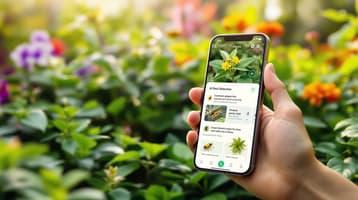
How AI Apps Detect Garden Pests in Real Time
AI apps revolutionize pest management by providing instant identification and tailored solutions for garden pests, enhancing plant protection.
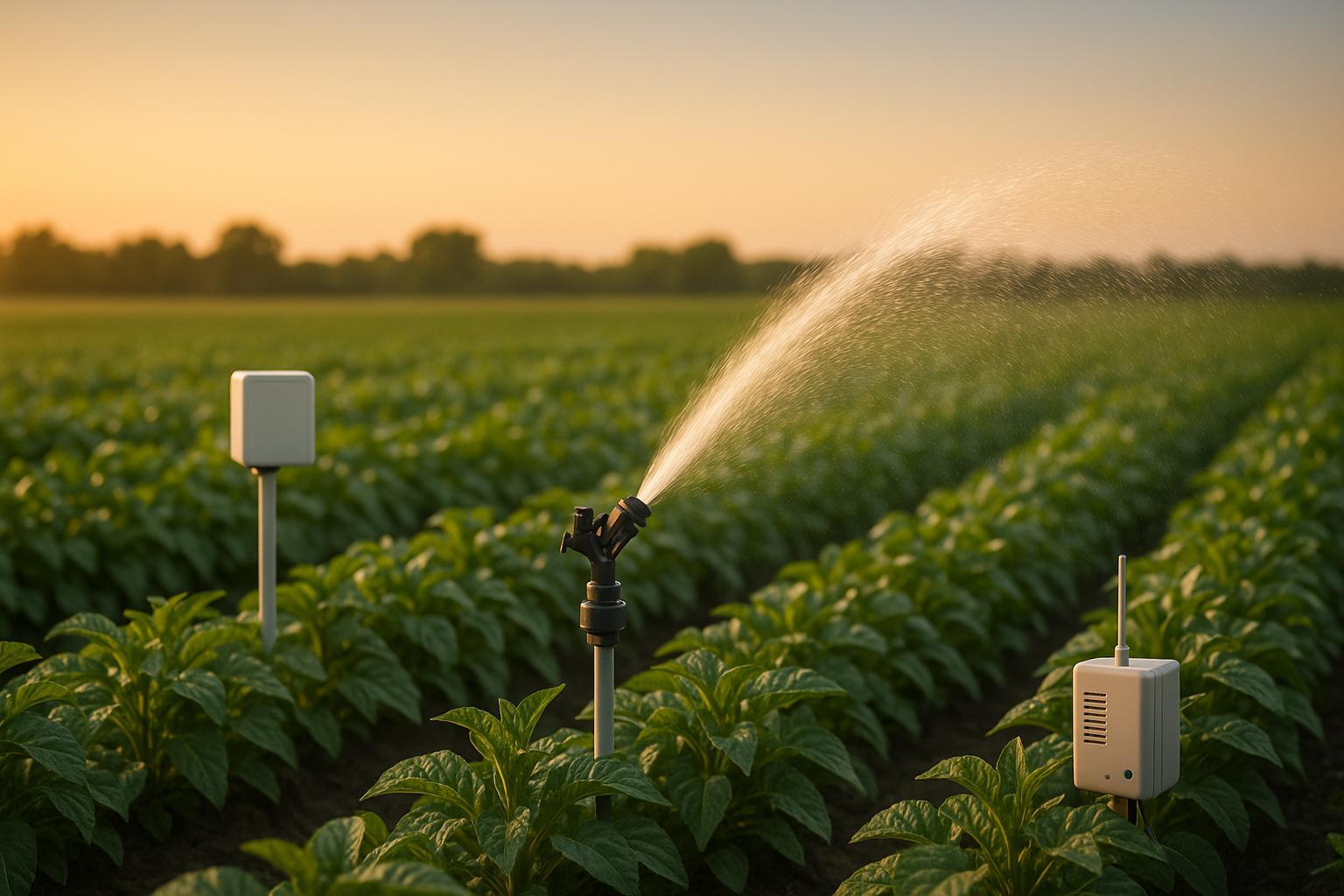
AI-Driven Irrigation: Smarter Water Use
Explore how AI-driven irrigation systems optimize water use, enhance crop health, and promote sustainability in gardening and farming.